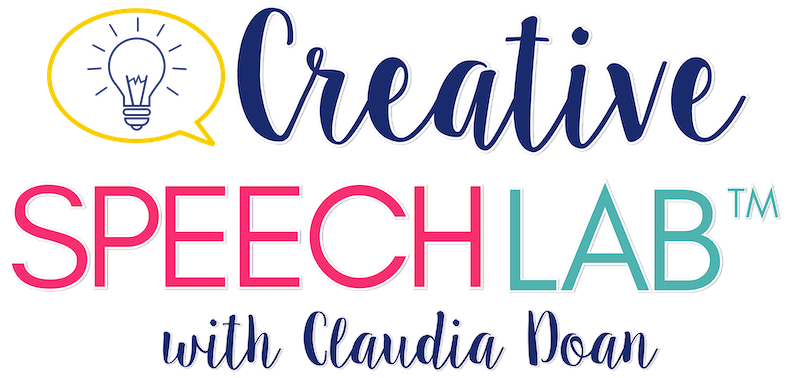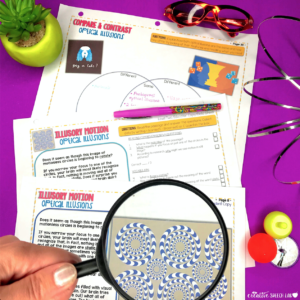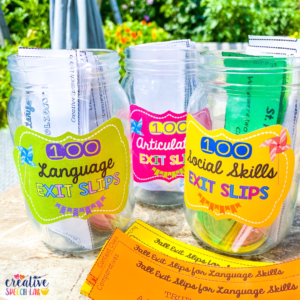True story. My first job as a CFY was at a private middle school where I was told I’d shadow my CFY supervisor for a week but…there was a change of plans on my first day…
I was given a full schedule but, I had no lesson plans or materials to call my own.
(No, this was not a dream…it was real!)
Needless to say, I’ve learned a lot since that day!
So, I’ll be sharing with you today what I wish I knew back then. Here are 5 key tools and tips that will help you with your older caseload!
1. Use High-Interest Content
Do your students’ eyes glaze over when you’re reading through a passage?
Older kids can be tough customers (but they inspire us to innovate!)
Don’t know where to begin? Let me assure you that your STUDENTS will let you know what they’re interested in!
After experiencing an eye-roll or two, I knew my students needed (and deserved) more exciting and engaging content. Scholastic News articles can be a great place to start!
These high interest nonfiction passages incorporate a ton of mind-boggling optical illusions that my older students love. (I mean, do you see the spinning wheels?!)
2. Use Debate Topics
Nothing spices up a session like a heated debate! (They’re fun, right?)
Try some of these topics!
Should school uniforms be required?
Do celebrities deserve more privacy?
Should the voting age be lowered?
These high interest debate passages and graphic organizers are differentiated and cover a large range of engaging topics. Have you ever incorporated topics like these in your sessions?
3. Make Inferencing Activities Relatable
For the longest time, I struggled to find challenging and engaging inferencing activities for my older students. Most activities felt too “babyish” and didn’t get at the heart of what my students needed.
Can you relate?
These Infer & Explain activities bring inferencing to life in a way that feels like a game. They’re challenging and involve a narrative older students relate to. (There are other sets here as well).
4. Build a Research-Based Routine with Exit Slips
Exit slips (or exit tickets) are research-based and easy to implement. Before students leave your session, they simply remove a slip and answer a question.
You can write your question on a piece of paper right after the lesson!
They are great for helping with generalization. If you don’t feel like making your own, these skill-based and seasonal exit slips cover a huge range of speech and language skills.
5. Use Theatre and Scripts!
Theatre provides context, meaning and engagement in a powerful way. There are a ton of amazing plays at every library!
These Articulation & Language Theatre Books from Northern Speech Services can be mixed and matched and target 12 speech and language skills. (Check out this video of them in action!)
They also work well in the classroom, which makes them a helpful tool for carryover between settings.
*** Although I’ve linked resources above, you don’t have to use these specific tools to be an effective therapist! You already have all of the skills you need to build an engaging, innovative and effective lesson for your students.
In summary, here are the 5 key takeaways to remember:
- Use High Interest Content (your students will tell you what they like!)
- Stir Up a Debate – refer to my topic list above!
- Make Inferencing Relatable
- Use Exit Slips (you can write a question before they leave the room!)
- Incorporate Theatre & Scripts – there are so many to choose from at the library!










